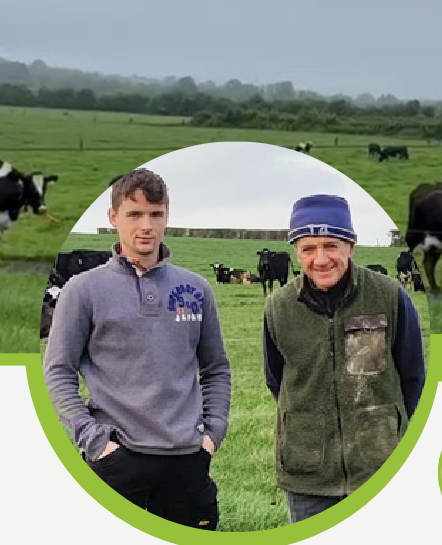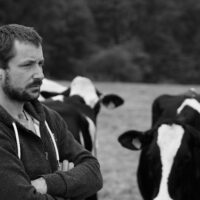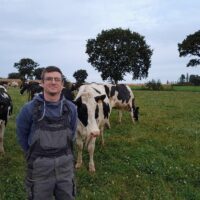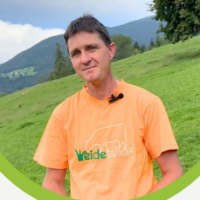Grass allocation using Pasture Base Ireland
Description
Practice abstract
Robert O Dea has always wanted to maximise utilisation in his pastures, and he considers grass utilisation to being key to his success as a dairy farmer. With the view to improving his grass allocation, Robert measures grass on a weekly basis. Robert uses the cut and weigh method. First, a representative area of the paddock is selected, avoiding biased factors such as gaps or waterlogged areas. The grass is then cut to a predetermined height, typically the target post-grazing height (e.g., 4 cm), using a grass shears. The equation used to calculate the dry matter (DM) yield in a paddock is, the weight of grass (kg) x grass DM% x 40,000 (Number of quadrats in a Ha) = kg DM/ha. Robert follows table 1 when determining the DM of his grass.

The weekly grass-walk determines the herbage mass (kg DM/ha) of each paddock using the cut-and-weigh-technique. The results are then fed into the Pasture Base application. “Pasture Base Ireland” (PBI) is a decision support tool that helps pasture-based farmers to better manage their grazing and make decisions. Robert uses the Pasture Base app to efficiently manage his pasture and livestock. He regularly enters weekly grass cover estimations to monitor pasture growth, records grazing events to track when and where livestock graze, and logs fertilizer applications with details like type, amount, and date. He also inputs livestock data, such as numbers, feed intake, and milk production. Additionally, Robert uploads soil tests and other relevant data, helping him make informed decisions and optimize farm management.
After several years of weekly grass walks and the use of PBI for grass allocation, Robert has seen a better utilisation of his herbage produced and has made better decisions around his grassland management which led to improved production on his farm and reduced the input costs. Robert benefits from the Pasture Base Ireland (PBI) tools by using the PBI app for easy and quick data entry. The Grazing Planner helps him make informed grazing management decisions, while the Grass Wedge visually tracks grass growth, aiding in effective pasture management. Through Reports and Analysis, Robert can assess his farm’s performance and compare it with others. Additionally, the MoSt Grass Growth Model, developed by Teagasc, predicts grass growth based on weather data, fertilizer use, and historical measurements, giving Robert valuable insights to optimize pasture productivity.
Farmers can take on this innovation by signing up in PBI without any cost. One of the challenging parts that Robert encounters is setting time aside to do regular grass-walks (weekly in spring and autumn; twice weekly in the summer/periods of high growth). However, he always prioritises taking the time because making correct grazing management decisions without this knowledge is more difficult.
Context profil
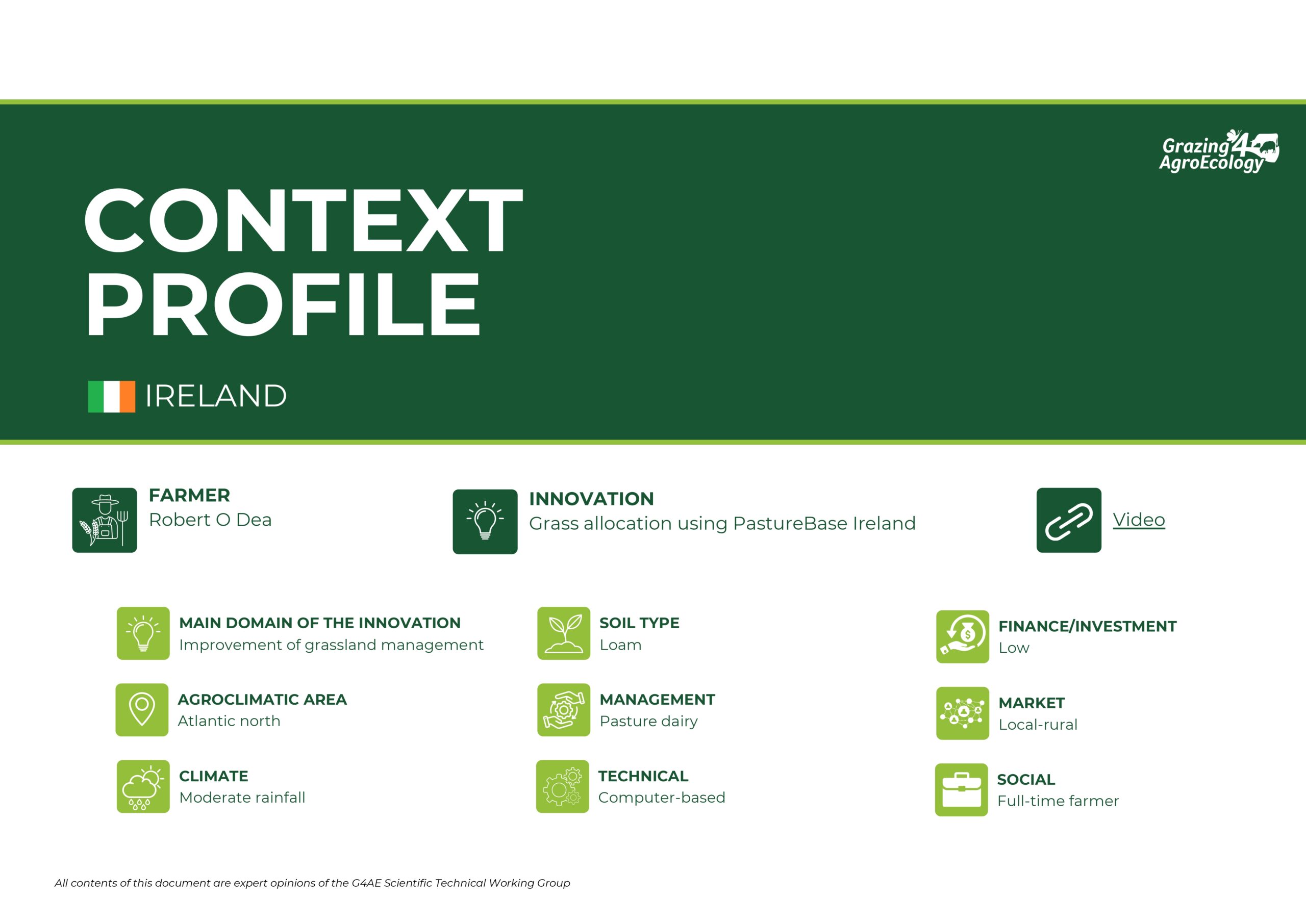
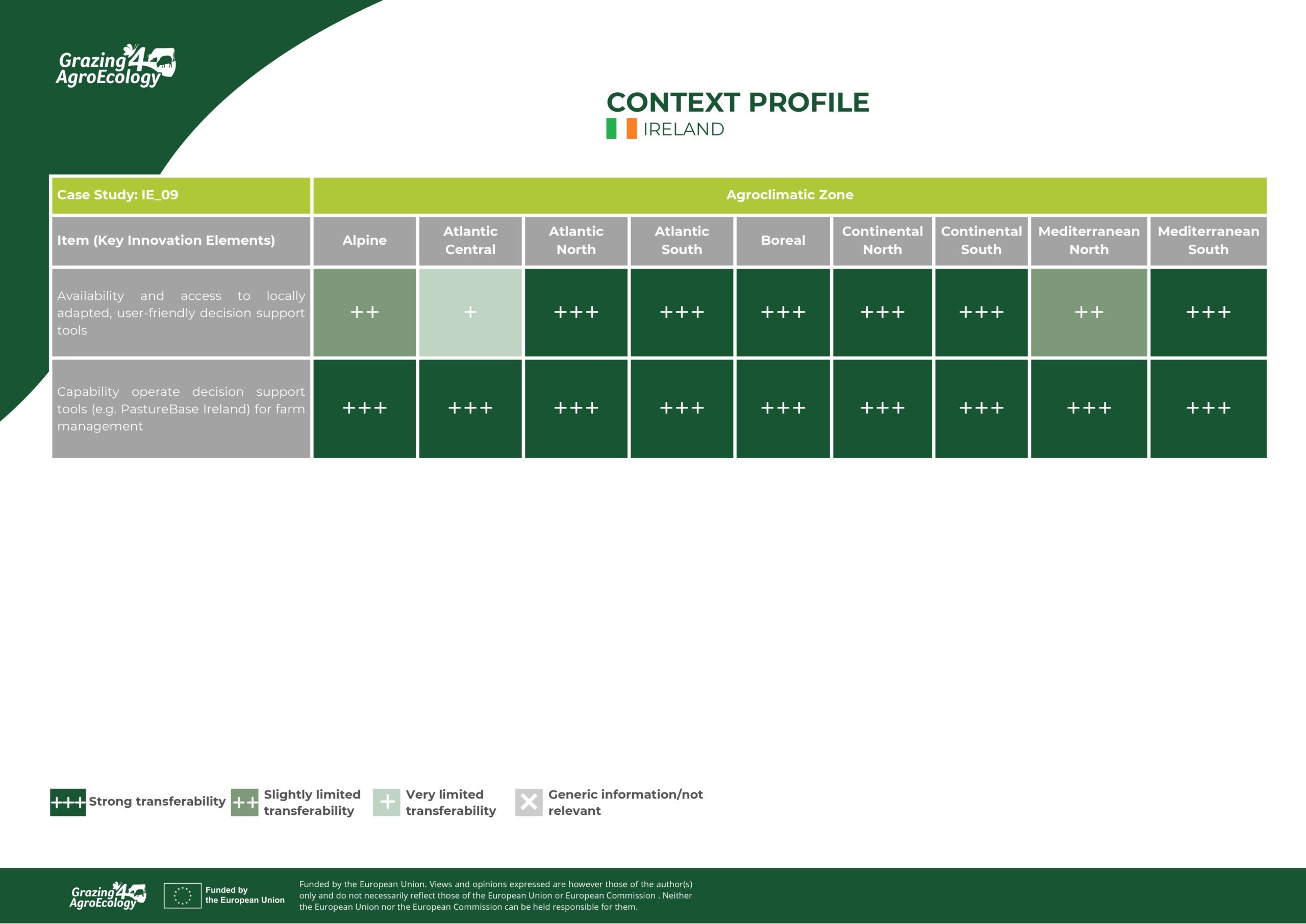
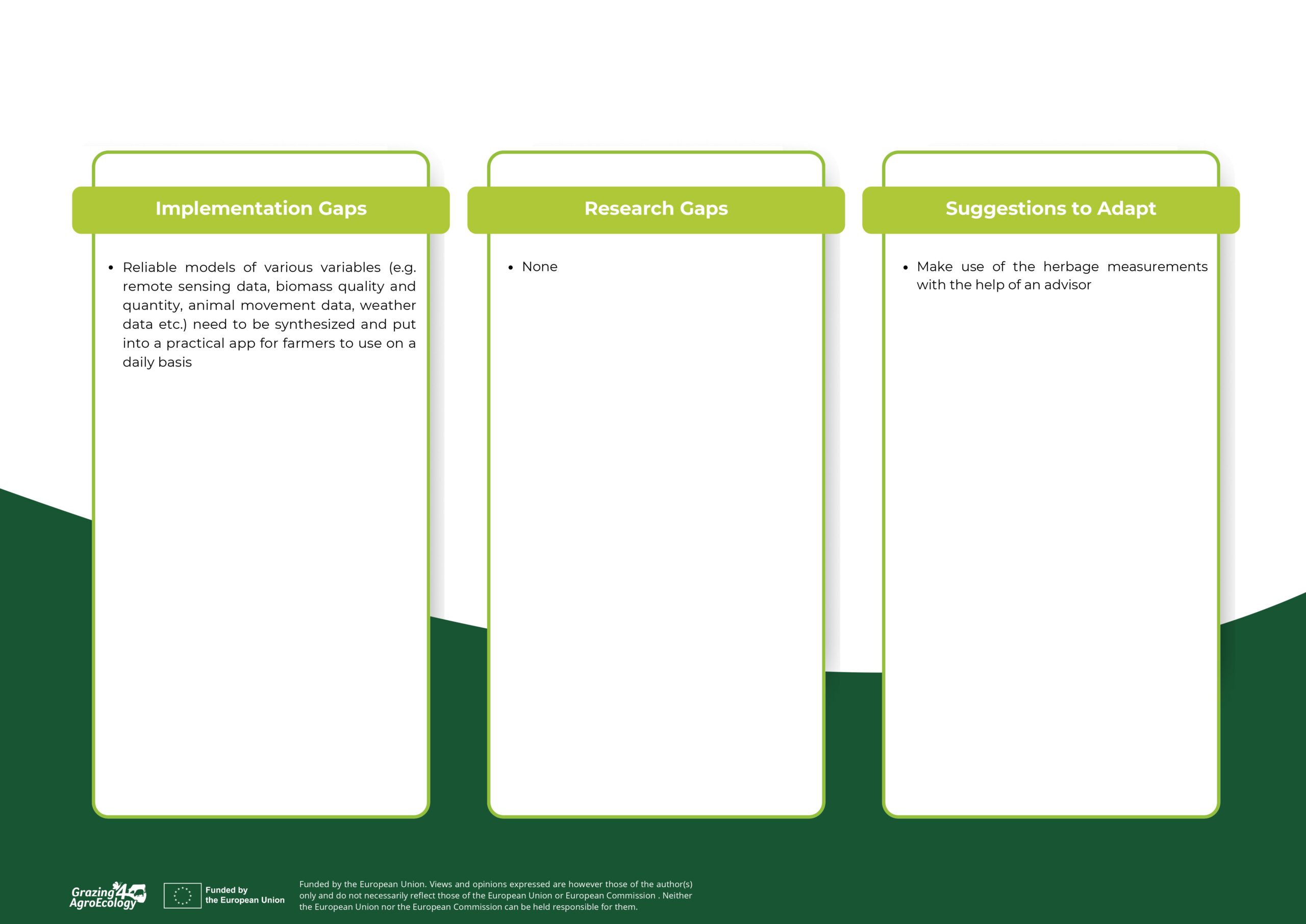

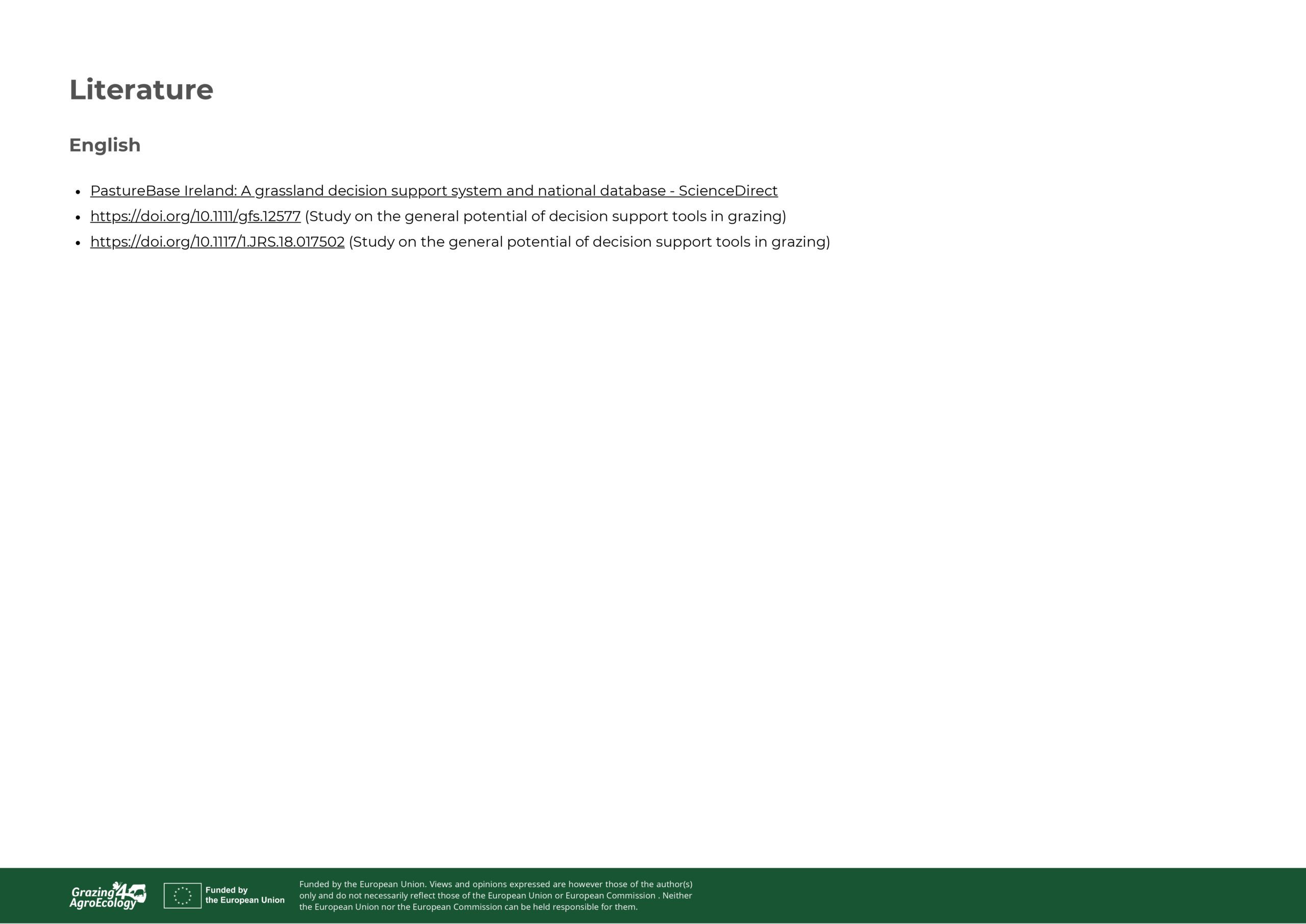
Additional information
| Main domain of innovation | |
|---|---|
| Agroclimatic area | |
| Climate | |
| Soil Type | |
| Management | Pasture dairy |
| Technical | Computer-based |
| Finance/investment | Low |
| Market | Local-rural |
| Social | Full-time farmer |
| Country | |
| Language |
